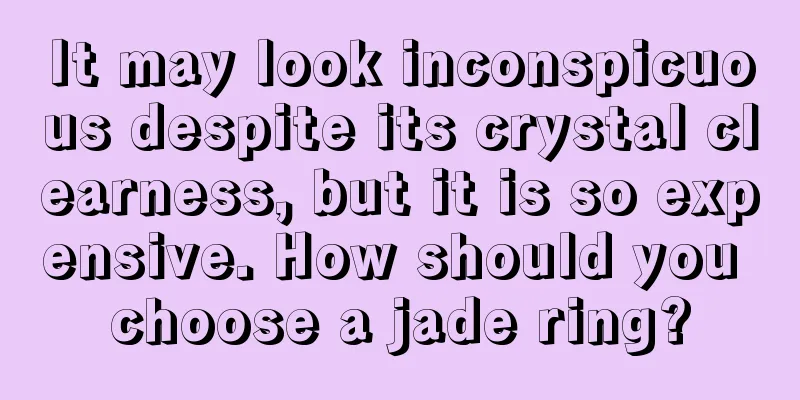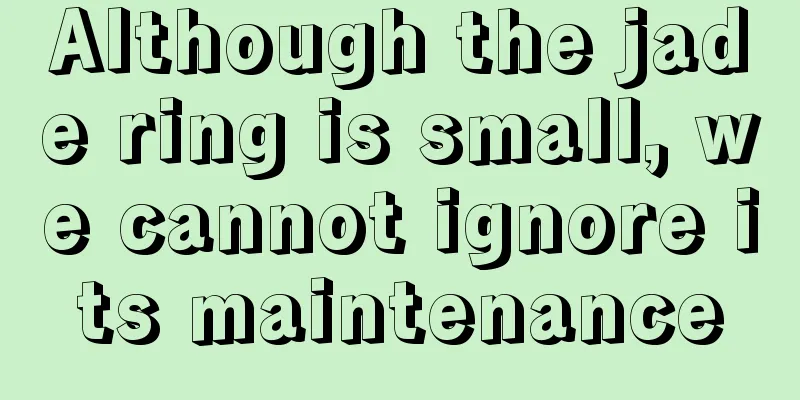With the blessing of four major cultures, it is no wonder that the ancients loved jade so much

|
The magic of gemstones lies in that, in addition to their beautiful appearance, they also have rich cultural connotations. Most of the brilliant colored gems symbolize passion, openness and freedom, and therefore they are very popular among Westerners. In comparison, the culture contained in the jade that Oriental people love is deeper and more restrained. Since ancient times, China has been known as the "Land of Jade". The ancients' love for jade was even greater than ours today. Some people say that they like jade because it is warm and transparent; some people say that they like jade because it can keep people safe; some people say that they like jade because wearing jade can improve their health... In fact, these statements are not groundless. Behind jade, there are actually four major cultures. Gentleman Culture The ancients emphasized the doctrine of the mean and valued harmony. The capital letter “和” (harmony) at the 2008 Beijing Olympics reflected the value orientation of the Chinese people for thousands of years. Under the influence of such culture, Chinese people respect "gentlemen". The warm and transparent properties of jadeite coincide with what the Chinese people pursue. This is why there is a saying that “a gentleman is modest and gentle like jade” (Note: this originally referred to Hetian jade, but now it generally refers to jade). Buddhist Culture This can be seen from the common jade carving themes. Buddha, Guanyin, and sitting meditation are the most popular jade carvings. The saying "Men wear Guanyin and women wear Buddha" is also influenced by Buddhist culture. Since Buddhism was introduced into China during the Han Dynasty, it has had a huge impact on Chinese traditional culture. Even today, although many Chinese are not Buddhists, the influence of Buddhism is still deeply rooted. The artistic conception of Buddhist culture was introduced into jade carving, which also created the Buddhist culture of jade. Peaceful Culture No country in the world can match the importance that the Chinese place on family. The most common wish of any Chinese family is peace, wealth, happiness and well-being. In ancient times, many children had a longevity lock hung on their bodies. Peace has been the greatest wish of the Chinese people for thousands of years and generations. There are many jade ornaments with the meaning of peace, among which Wu Shi Pai, Ping An Kou, bracelets and ring faces reflect the culture of peace. Extending from this is the culture of blessings, such as promotion, wealth, warding off evil spirits and disasters, having many children and good fortune, etc. Health Culture In addition to safety, another major pursuit of the Chinese is longevity. Traditional Chinese medicine was invented in ancient China with the aim of curing diseases and maintaining health. The description of jade in ancient medical techniques is "jade is the most beautiful stone, sweet in taste, mild in nature and non-toxic." The ancients believed that jade could not only be used as a decoration, but also had the health-preserving function of strengthening the body. Emperors and concubines of every dynasty could not do without jade in their health preservation. The story of Yang Guifei holding jade in her mouth to relieve the heat is the best illustration of this. With the “blessings” of four major cultures, it’s no wonder that the ancients loved jade so much!
fruit fcgc33 |
<<: Discussing the cultural connotation and benefits of wearing jadeite
>>: The cultural soul of jadeite - blessing culture
Recommend
Inlay brings jade back to life
Modern people's demand for and aesthetic stan...
Imitation of antiques is a continuation of jade culture. He pays tribute to the ancient jade carving craftsmen with his unique skills of imitating ancient dragons.
Perseverance can help you find more fun in jade c...
The artistic conception of tranquility and far-reachingness - Appreciation of jade enlightenment
There are many themes of jade carvings, such as c...
How to choose jadeite? Three principles for buying jadeite jewelry
Jade is now loved by many people, and more and mo...
Jade carving is actually not simple. Do you understand such beauty?
The ancients said, "If jade is not carved, i...
Which aspects should we consider when evaluating the color of jadeite?
Jade has extremely rich colors. People in the ind...
Real shot: The entire process of making and processing jade bracelets, that’s what it is!
Want to know how jade bracelets are made? Today, ...
Although the jade has only a thin layer of yellow mist, the carving is very delicate and charming.
There are some jade materials, although their wat...
A Brief History of Jade Mining
Jadeite is the king of jades and the national jad...
Tips and steps for identifying jadeite with the naked eye, methods for identifying A-grade, B-grade, C-grade and D-grade jadeite
Many friends often ask me how to judge the authen...
What aspects should we focus on when appreciating jadeite? Remember these five key elements and you too can talk fluently
How to evaluate a piece of jade jewelry? Jade jew...
How to Preliminarily Identify Real and Fake Jade
Many times, you will be caught off guard against ...
Jadeite flakes, skillfully carved into finished products, the artistic conception is so beautiful
Today I would like to share with you two pieces o...
When changing your jewelry in spring and summer, don’t forget your ears. Wear earrings, studs, earrings, ear wires...
Among all accessories, earrings have a relatively...
Only jade can understand the charm of oriental men!
When it comes to jewelry, almost everyone will th...









